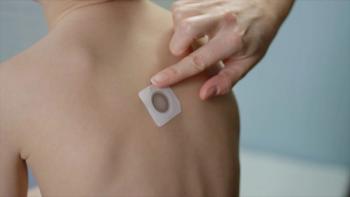
- Vol 35 No 05
- Volume 35
- Issue 05
Stock photos miss the boat on safe sleep environments
An analysis of about 1590 stock photographs of sleeping babies found that infants often are not portrayed in a way that is consistent with American Academy of Pediatrics’ guidelines on infant sleep safety.
An analysis of about 1590 stock photographs of sleeping babies found that infants often are not portrayed in a way that is consistent with American Academy of Pediatrics’ guidelines on infant sleep safety. Investigators obtained the photographs-from the top 3 stock photo websites-by using a variety of search terms, including “safety phrases” (such as “safe infant sleep”) and “generic phrases” (such as “peaceful baby sleeping”). They then analyzed the photos for consistency with infant sleep safety in 7 areas: sleep position, sleep location, sharing of sleep surface, presence of bedding, presence of stuffed animals, head covering, and pacifier use.
Of 1233 sleeping infants who were not being held or in a sitting position, only about half (50.8%) were supine, while 23% were prone, and 26.1% were on their sides. In 66.2% of images, sleeping infants were not sharing a sleep surface. Almost three-quarters (71.3%) of the images included bedding that is not consistent with safe sleep recommendations; indeed, almost half (49.4%) showed blankets. The photographs of sleeping infants also portrayed infants with covered heads (15.3% of photographs), accompanied by stuffed animals (10.5%), and in cribs with bumpers (3.3%).
Only 79 photographs (5%) were images of sleeping infants with all the correct basic elements of safe sleep, including supine position, not sharing a sleep surface, and no unsafe bedding, head covering, or stuffed animals. Investigators found only 5 photographs (0.3%) of an infant sleeping correctly in a crib-and with a pacifier (Goodstein MH, et al. Clin Pediatr (Phila). 2018;57[4]:403-409).
Thoughts from Dr. Burke
Have you ever looked at the photographs in your waiting room magazines? It may be a good idea. These authors point out that parents of your patients may hear your advice on safe sleep practices, but they are also being exposed to subtle, perhaps unintentional, contradictory information. Maybe we need to call this out by starting safe sleep discussions with: “Even though you may hear other advice or see pictures of babies sleeping other ways, here’s the safest way to have your baby sleep.”
Articles in this issue
over 7 years ago
Hugging is healing for NICU babiesover 7 years ago
Prediabetes: How to identify children at riskover 7 years ago
Plain talk about office practicesover 7 years ago
Boy’s white patches signal pigmentary disorderover 7 years ago
10 commandments of obesity prevention for childrenover 7 years ago
“Doctor, please don’t call me Mommy!”over 7 years ago
Social media and sleep duration-there is a connection!Newsletter
Access practical, evidence-based guidance to support better care for our youngest patients. Join our email list for the latest clinical updates.







